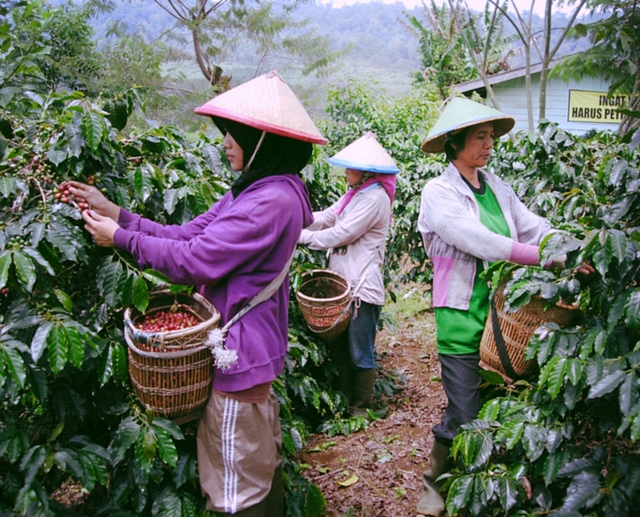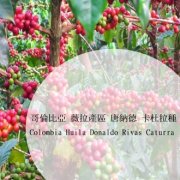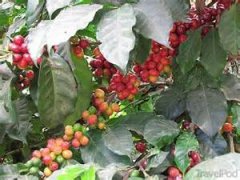Sumatran Coffee plus Young Tavar Star 19 mesh + Mantenin Sumatra Coffee beans allusions

Professional coffee knowledge exchange more coffee bean information please follow the coffee workshop (Wechat official account cafe_style)
Starbucks Sumatra Coffee beans introduce the story of Starbucks Sumatra coffee beans
Products: Mantenin, star of Tavar, Sumatra, Indonesia 19 mesh +
(Indonesia Sumatra Gayo Lake Tawar Classic TP SC19+)
Flavor description: cream, light herbs, baked bread, hazelnut, sweet spices,
The flavor of cocoa and caramel is pure and unique, full of round and rich texture
Full-bodied and full-bodied (body), with a deep and long finish.
Country of origin: Indonesia (Indonesia)
Producing area: Lake Tavar (Tawar Lake) area, Aceh Province
Varieties: Catimor, Caturra, Typica, Sidikalong
Producer: small coffee farmers near Lake Tavar (Lake Tawar)
Altitude: 1100 to 1300 m
Soil: highly fertile black volcanic soil
Treatment: traditional wet plucking treatment
Grade: three times hand-selected G1
Introduction:
Indonesian coffee is very diverse in quality, most of which are based on the island origin as its market name: such as Sumatra, Sulawesi, Jawa or Timur. The advantage of Indonesian coffee is that most coffee is characterized by strong, introverted flavor and lively moderate acidity. Chinese people have a good opinion of Indonesian Mandheling coffee, and it is one of the coffee products with the highest acceptance. Indonesia Mandheling was once praised as the best unique wet peeling coffee bean in the world. Mantenin is a trademark merchandise. Nowadays, as long as the red cherry fruit of coffee harvested in Indonesia is processed by this unique wet peeling method, it will be sold as Mantenin coffee beans. Mandailing grew coffee from the Tapanuli region of northwestern Sumatra, because at the end of World War II, a Japanese soldier introduced the Japanese market and changed the wrong Mandailing into Mandheling coffee because of mispronunciation.
Sumatra (Sumatra):
Sumatran coffee is very complex and elusive. The best coffee in Sumatra comes from two places: the province of Acheh, north of Sumatra, near Lake Tawar and the province of Lindong in the south (Lintong), surrounded by mountains near Lake Toba Lake. Due to many sharecropper producers and the use of their unique semi-washing treatment and lack of iron in the soil, coffee beans in this area have a special blue color at the stage of fresh beans.
This batch of Mantenin, the star of Tavar in Sumatra, is located in Aceh province and Gayo region in the north of Sumatra. Most of the residents here are coffee growers. Due to the natural environment, located at high altitude and rainy, it is very suitable for growing coffee. Coffee is grown on the slopes around the town of Takegon and Lake Tawar. The average planting height in the production area is between 1100 and 1300 meters. Coffee is planted by shade farmers under shade trees, showing a peculiar flavor, low depth and lively and full-bodied flavor. Aceh is a fascinating and complex place in the northernmost corner of Sumatra. Aceh is not an area that ordinary people want to visit because of long-term political instability. In recent years, local security and tourism safety have been improved as a result of an agreement between locals and the Jakarta government.
Gayo people are hardworking people with a firm personality, and nearly 20% of coffee processors are women. Under this semi-wet and semi-dry peeling and wet washing method, the coffee farm machine removes the peel and pulp of the red cherry fruit. There is still a lot of mucus on the coffee beans, and then it is stored in a fermentation tank for about a day (24 hours). When the fermentation is complete, the attached mucus can be easily washed away with water. Then when the sun-drying reaches about 30% to 35% water content, the coffee bean shell is removed and it can be sold on the market. When the shell of the coffee bean is removed in this semi-wet and semi-dry state, the bean itself reveals a unique dark blue, which reduces the acidity and increases the alcohol thickness (body) of the coffee.
.
Important Notice :
前街咖啡 FrontStreet Coffee has moved to new addredd:
FrontStreet Coffee Address: 315,Donghua East Road,GuangZhou
Tel:020 38364473
- Prev

Suggestion and flavor description of how to drink Donald coffee beans in Yahuilan, Colombia
Professional coffee knowledge exchange more coffee bean information please pay attention to the coffee workshop (Wechat official account cafe_style) Colombian coffee basic knowledge and flavor description hand-made Colombian Donald. 15g powder, medium grinding (small Fuji ghost tooth cutter 4 grinding), v60 filter cup, 88-89 degrees water temperature, 30g water injection for the first time, steaming for 27 seconds, and water cut off to 105g water.
- Next

Indonesian Sumatran Coffee the Story of Sumatra Coffee beans in Aceh producing area
Professional coffee knowledge exchange more coffee bean information please follow coffee workshop (Wechat official account cafe_style) Starbucks Sumatra coffee beans introduction Starbucks Sumatra coffee beans story of Starbucks Sumatra coffee beans Indonesia Sumatra Aceh province plus juvenile Mantenin G1 high altitude 1700 meters product: Indonesia Sumatra Aceh province plus juvenile Mantenin G1 high altitude 1700 meters (Indonesia)
Related
- Does Rose Summer choose Blue, Green or Red? Detailed explanation of Rose Summer Coffee plots and Classification in Panamanian Jade Manor
- What is the difference between the origin, producing area, processing plant, cooperative and manor of coffee beans?
- How fine does the espresso powder fit? how to grind the espresso?
- Sca coffee roasting degree color card coffee roasting degree 8 roasting color values what do you mean?
- The practice of lattes: how to make lattes at home
- Introduction to Indonesian Fine Coffee beans-- Java Coffee producing area of Indonesian Arabica Coffee
- How much will the flavor of light and medium roasted rose summer be expressed? What baking level is rose summer suitable for?
- Introduction to the characteristics of washing, sun-drying or wet-planing coffee commonly used in Mantenin, Indonesia
- Price characteristics of Arabica Coffee Bean Starbucks introduction to Manning Coffee Bean Taste producing area Variety Manor
- What is the authentic Yega flavor? What are the flavor characteristics of the really excellent Yejasuffi coffee beans?

